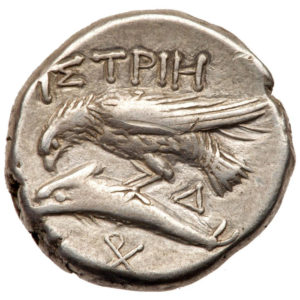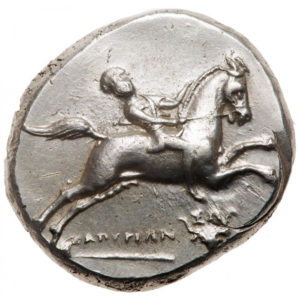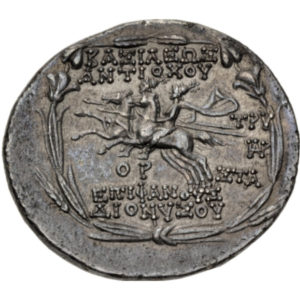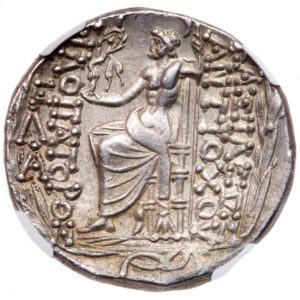480-457BC Aegina Sea Turtle Silver Stater, AR 11.53g, Sea turtle, Square with skew pattern incuse. Banker’s mark on obverse. Ref: HGC 6, 434.
An early Greek silver coin
From its beginnings in Asia Minor (modern Turkey) in the seventh century BC, coinage gradually spread to the wider Greek world. Some ancient Greek writers attributed the first Greek coins to Pheidon, a seventh-century king of Argos in the Peloponnese. Modern numismatic research has shown, however, that the origins of Greek coinage lie a century later, and not on the Greek mainland. The earliest Greek coins are electrum (an alloy of gold and silver) coins of the Greek cities of Asia Minor, such as Miletus and Phocaea.
By the late sixth century and early fifth centuries BC, many Greek states were producing coinage in silver. One of the earliest and busiest Greek mints was on the island of Aegina, off the north-eastern coast of the Peloponnese. Probably by 550 BC, the production of distinctive silver staters had begun on the island. On the obverse (front) of the coin was a sea-turtle design. The reverse consisted of a square punch which, with gradual variation, remained on the coins throughout most of the fifth century BC.
These ‘turtles’ were an important early trading currency. Like the early electrum coinages, they have a design on one side only, and a punch mark on the other.
G.K. Jenkins, Ancient Greek coins (London, Seaby, 1990)
C.M. Kraay, Archaic and Classical Greek co (London, Methuen, 1976)
I.A. Carradice, Greek coins (London, The British Museum Press, 1996)
I.A. Carradice and M.J. Price, Coinage in the Greek world (London, Seaby, 1988)












